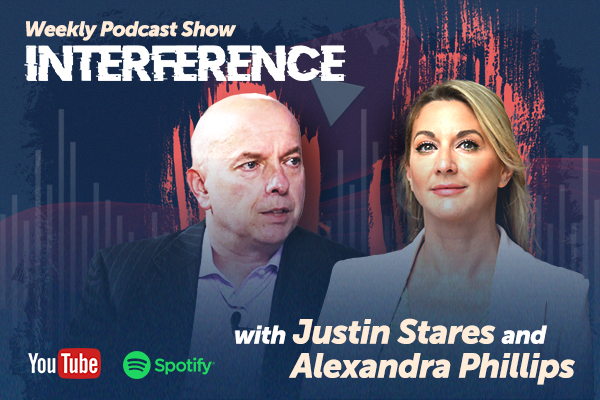Moving with its usual lightning speed, the European Commission has pencilled in the end of 2027 for new guidelines designed to relax competition rules and permit mergers between European mega-firms. The Commission will presumably need every bit of that two and half years if it is to write these new guidelines without modifying existing competition law, which has no apparent exceptions for the creation of industrial champions. Faced with two irreconcilable objectives, the EU is likely to indulge in its customary fudge: a “nudge and wink” approach to inconvenient regulation. The Commission will gas away about the sanctity of EU law, but quietly encourage EU competition commissioner Teresa Ribera to wave through corporate tie-ups in officially favoured sectors like defence, telecoms and technology. Since former commissioner Margrethe Vestager blocked the proposed tie-up between German engineering giant Siemens and French transport manufacturer Alstom in 2019, Emmanuel Macron has been scheming to water down internal competition rules. After all, why should EU law favour nameless European consumers over a French President seeking to spawn a new generation of Airbus-like consortia? An official blessing for the creation of Euro-champions would constitute a key element in the EU’s emerging preference for protection over competition.
This signal change in the EU’s trade philosophy derives from darkening assessments of Europe’s primary overseas markets. China has emerged as a competitor to European manufacturers and has acquired their technology though means both fair and foul. The Trump tariffs are pricing European brands out of the American market and encouraging car makers to increase production in the US, preserving their profits at the sacrifice of European jobs. The Commission is threatening retaliatory tariffs against American goods, but faces an unequal contest with the White House, given Europe’s massive export surplus with the US. The EU has far more at risk in a trade war than the US.
Assuming the EU can in fact nurture new industrial champions with its usual tools of subsidy and protection, to whom will these champions sell? America has been a lucrative destination for European goods since the Korean War boom sparked the German Wirtschaftswunder 75 years ago. When American demand matured into single digit annual growth, China emerged as the explosive growth market for European exporters. So who now will consume wares offered by notional European champions after the new guidelines take effect? India is determined to protect its own industries and follow China’s example as an export titan. The rest of Asia is already wired into China’s trade orbit, and would rather sell to Europe than buy from it. Africa simply does not possess a GDP per capita high enough to replace current American or Chinese demand. Who is left, Mars? New guidelines and subsidies won’t create EU industrial champions without global demand for their goods.
Europe faces a reckoning. It simply cannot afford a retreat to its domestic market. Eighty-two million Germans export as much as 330 million Americans, meaning the largest EU economy is utterly dependent on foreign markets. No fiscal splurge by Berlin will generate consumer demand sufficient to offset lost US demand. Nor will Chancellor Merz’s vaunted rearmament fund absorb excess capacity in Germany’s auto industry. Annual tank and armoured vehicle production is measured in the dozens while VW’s Wolfsburg complex makes a half a million cars a year. German autoworkers are more likely to see their jobs migrate to Romania and South Carolina than they are to find work building Leopard tanks. Even under relaxed spending rules, Europe’s domestic demand cannot sustain the EU’s present prosperity.
Given its dependence on export surpluses, Europe cannot afford a trade war. America has fuelled the international economy with an apparently insatiable demand for imports, but now seeks to compel domestic production behind punitive tariffs barriers. It is likely that this policy will endure after Trump leaves office, given the broad support for the protectionism embedded in Joe Biden’s Inflation Reduction Act. If we are indeed entering a Neo-Mercantilist era, in which nations compete not for bullion reserves but export surpluses, Europe will find itself in a cage match with China over the export markets critical to continued European prosperity. It will be an unequal contest. Unlike the EU, China is unhindered by rules on subsidies, competition, or outright bribery. Beijing can repress wages and funnel capital to any company offering high export returns unhindered by the complex and querulous bureaucracy that slows the EU. Blessed by its WTO status as a developing economy, China can protect its domestic producers while it freely penetrates European markets. The astonishing rise of EV maker BYD in Europe is a warning the EU cannot fail to heed.
Europe’s best bet is to make a deal with the White House before China strikes its own deal. President Trump’s threatened 50 per cent tariff on EU goods is in abeyance for a critical few weeks. Commission President von der Leyen must move quickly to strike a deal China cannot make: one based on strict tariff reciprocity in manufactured goods. A common 10 per cent tariff on cars is substantially higher than the 2.5 per cent applied to European autos until recently, but is clearly a better deal than a 50 per cent levy scheduled to take effect in July. It may require some unseemly grovelling by proud EU functionaries to get a deal out of this White House, but may be the only way to secure access to the lucrative American market. Europe’s industrial base has feasted on the American market for decades. A slice of humble pie may not be a favourite dish for lordly EU diplomats, but it’s the least they can do for their humble workers.





Merz will learn from Bismarck, firewall against the AfD may actually be political fuel